A survey revealed 87% of business leaders say their organization would be more successful if their workers had all of the data resources and technical capabilities to make decisions (Source: ThoughtSpot), but according to the Gartner Annual Chief Data Officer Survey, poor data literacy is the second-biggest internal roadblock to an organization’s success.
Data literacy has become integral for informed decision-making and strategic planning. Despite its clear importance, many businesses continue to struggle to bridge the gap within their teams. To address this, we’ve listed 6 actionable tips for improving data literacy in your organization.
What is Data Literacy?
To put it simply, data literacy is the ability to read, analyze, and interpret data. Because this definition is broad, it can look different for each member of your team – ranging from the granular knowledge of a data scientist to the general literacy of business executives. Ultimately, all stakeholders must be data literate to understand and communicate the implications of your organization’s data.
However, businesses continue to struggle with data literacy in their organization, even if they don’t know it. According to Accenture, while 75% of C-suite execs believe most of their employees have data proficiency, the reality is that only 21% of employees are actually confident in their data skills.
Importance of Data Literacy
Data literacy is not just a buzzword; it’s a fundamental factor in determining a company’s success. Understanding data sources, constructs, and analytical techniques is pivotal for leveraging data effectively.
Benefits of Data Literacy
Benefits for your organization can include:
- Increasing Customer Satisfaction: data helps you learn more about your customers, allowing you to cultivate a more personalized experience for them.
- Gain a competitive edge: ultimately, data-backed strategies and campaigns are more likely to succeed, giving your company an advantage.
- Growing team empowerment: overall employees’ skills will improve, improve their confidence, and encourage the whole organization to build on knowledge and make informed decisions.

6 Tips to Improve Data Literacy
Data literacy is essential in driving business value, and over 80% of data and analytics strategies include data literacy as an important area of focus. Empower your data teams with these 6 tips on improving your organization’s data literacy:
Tip 1: Implement Data Literacy Training Programs
To build a data-literate workforce, implementing data literacy training programs will allow your organization to collaborate with little friction. This helps create an environment where data knowledge is a part of the overall company culture. Training should be an ongoing part of the business to keep up with the constant changes in the industry.
The first step would be to conduct data literacy assessments to identify gaps in your organization. This will help you establish a baseline. Then, you can create workshops to engage your team in learning – but make sure to incorporate activities that are fun and engaging to encourage teamwork, problem-solving, and creativity.
Tip 2: Find a Data Mentor
The importance of finding a mentor or hiring consultants is that there is strength in perspective. Specialists can assess what areas need work and curate a personalized plan to help you achieve your goals confidently. Thanks to their expertise, they can highlight specifically how data literacy would provide value for your team. Outsourcing data leaders, such as SENEN consultants, can provide an unbiased view of your data, and help you gain a complete view of your data.
Tip 3: Democratize Your Data
Democratizing your data is a continuous and ongoing process. This is the practice of data sharing within your organization so that everyone can answer their data-related questions easily. Ultimately, democratizing your data goes hand-in-hand with data literacy, since your team should know what to do with the data once they gain access. Democratizing your data reduces the risk of silos, and centralizes it so that it can be easily accessed and all members have the most updated insights without inconsistencies.
This empowers your team members to use data for informed business decision-making without needing any technical skills or IT intervention. Data democratization enables self-service analytics for your non-technical employees and ultimately encourages data transparency to build trust.
Tip 4: Make Sure You’re Using Data-driven Goal Planning
This means mapping out literacy at different levels in your organization for your program. Using data to drive your goal planning allows you to allocate resources and efforts more effectively.
It’s important to set specific goals, targets, and KPIs to measure your progress. This will require establishing best practices when handling the data to reduce the risk of it becoming friction and fragmentation. Using these metrics will help you gauge how successful your data literacy strategy is.
Tip 5: Data Literacy Employee Encouragement
Employee engagement starts with your data leaders. Taking a top-down approach allows you to identify the data leaders in your departments and act as data stewards for every team. Your assigned data leaders can model their team’s data literacy with their own experience and share their insights.
Through your leaders, you can encourage your employees to improve their skills while also providing them accessible support. This could mean simplifying tasks so beginner employees can grow their confidence working with data. You can also encourage through incentivization and open feedback programs. Promote inclusive dialogues across all levels, embracing a variety of viewpoints to cultivate better results. Consistently emphasize the significance of data by clarifying the value of data frequently.
Reward curiosity instead of punishing a lack of data literacy. Remember that everyone learns differently.
Tip 6: Data Analysis
Once you know where the data is coming from, and how it interacts with your daily life, you can analyze the data to understand it.
This process includes data collection, formatting, cleaning, exploring possibilities, identifying patterns, and drawing conclusions. Foster a culture of data analysis, emphasizing the systematic application of logical techniques to evaluate data.
Moving Towards Data Literacy
In conclusion, improving data literacy within your organization is not just a matter of choice; it’s a necessity. As your business moves towards a future where data literacy is a cornerstone of success, you can provide a roadmap for organizations to empower your workforce.
By investing in literacy training, leveraging specialists, democratizing data, setting clear goals, fostering data analysis, and encouraging employee engagement, businesses can bridge the data literacy gap and thrive in the data-driven landscape.
Ready to unlock your organization’s full potential? Contact us today and transform your organization’s data challenges into opportunities.


